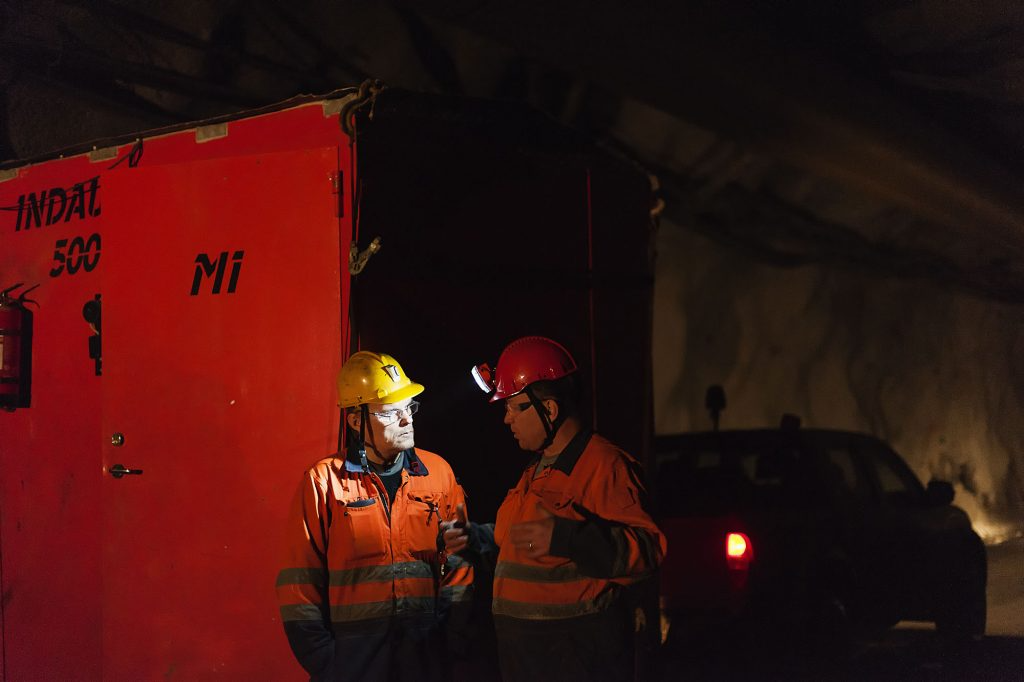


Global scale, Local impact
AES is deeply rooted in local culture and customs. We invest in our communities in a way that makes the best sense for them. We learn, grow, expand, and share the experiences we have to bring innovation from one market to another, changing the future of energy, together.
Contractors & suppliers
Our suppliers play an important role in helping us achieve our sustainability goals. Promoting acceptable working conditions, environmentally responsible management and ethical behavior are all key parts of our commitment. To deliver on this commitment, we need to ensure our suppliers are aligned with our values and work with the highest standards.
We hold our suppliers and contractors to the same high ethical standards we have. The AES Ethics & Compliance Program takes a risk-based approach that categorizes suppliers based on the potential risk of the transaction involved. The risk profile of an engagement determines the required pre-engagement due diligence and any conditions of engagement, such as requirements for certifications, acknowledgments, training, and engagement structure. We strive for continuous improvement and support our suppliers if performance improvements are needed.

Procurement requirements
AES businesses are very diverse with their own unique portfolios, but we all adhere to the same procurement processes. All procurement activities are carried out in alignment with our values and operational standards and in compliance with local and international laws.
Our procurement guidelines define AES business practices and expectations worldwide. We promote a transparent and fair environment for potential suppliers to participate in our bidding processes. Together with our Ethics and Compliance Program, our safety and environmental guidelines, and our local teams, we strive to ensure our process includes sustainable practices that support our environment, our stakeholders, and the communities we serve.
Supplier evaluation program
We evaluate new and existing suppliers using a diverse set of tools depending on the complexity or criticality of the transaction. One tool we use is STACE (Safety and Sustainability, Technical, Alignment, Cost, Execution), a scorecard that enables our people to evaluate supplier proposals and performance in a fair and consistent manner.
The pre-qualification supplier process includes financial and ESG factors and compliance with laws. Existing suppliers are evaluated and audited for their environmental, safety, and labor practices. Sustainability criteria included in the evaluation process are tailored to the specific location of the work, materials, and/or services provided. These can include environmental and safety metrics and performance, commitment to comply with all applicable labor regulations (such as child or forced labor, working hours, etc.), and other criteria.
We also have a process to evaluate a contractor’s potential environmental impacts, including contractors that transport and supply oil, fuel, ammonia, coal, or byproducts to our site. In addition, all contractors and suppliers working on-site or on behalf of AES should adhere to our safety and environmental standards.
Supply base risk management
To manage risk in our supply chain, we have established standards that include:
- Contingency plans. We understand that the supply chain plays a key role in minimizing the downtime associated with asset failure since unexpected high impact events may have a substantial negative impact on the business. We have adopted guidelines to create contingency plans and/or procedures to identify and respond to incidents and emergency situations and maintain continuous operation of critical assets. Proper mapping of critical suppliers is included as part of the spend analysis activities, and we also identify alternative sources.
- Inventory & criticality relation. We include criticality assessment for the different assets and parts within inventory as well as proper planning tools to ensure availability and replenishment according to lead times.
- Asset management. Assessment of supplier performance enables the identification of issues to be addressed via corrective action plans as well as best practices that should be recognized and duplicated.

Performance indicators
To improve performance, we set annual objectives aligned with the overall business strategy. Some of the supply chain activities key performance indicators (KPIs) include:
- Inventory optimization – ensures the availability of the goods that are needed and reduces the risk of stock outs by focusing on demand planning activities. In previous years, we have exceeded our inventory reduction targets.
- Spend management – Our goal is to have at least 25% of our spending with suppliers managed under contracts in our centralized database, rather than as stand-alone purchases. Since 2015, our percentage of spend under contract has achieved this target.
- Savings – Savings expectations are set on a long-term basis with an official target set annually during the budget review process. In previous years, AES has exceeded its saving targets.

Sustainability principles
Using the following principles, our supply chain professionals drive sustainability and social responsibility excellence across our businesses:
- Diversity and inclusiveness: We engage with a diverse set of suppliers across many categories to meet our business needs.
- Environment: Supply chain management actions and decisions must promote health, protection, preservation, and vitality of the environment in which the organization operates, including water, land natural resources, flora, fauna, and the people who are directly or indirectly related to our operations.
- Ethics and business values: The standards of our Supply Chain Management group are founded on our ethics and compliance policies and procedures, as well as our Code of Conduct.
- Health and Safety: Suppliers must act to protect and reduce the occurrence or risk of injury, danger, failure, error, accident, harm, or loss and comply with our health and safety programs.
- Human Rights: All supply chain procedures and actions must facilitate our businesses’ compliance with local labor laws and create the mechanisms that will encourage the observance of human rights and other regulations.

Prospective suppliers
Current suppliers